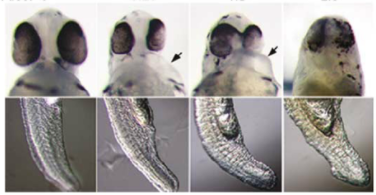Understanding the Impact of Alcohol During Pregnancy: A Closer Look
Written on
Chapter 1: The Beginning of My Research Journey
I vividly recall my initial experiment in the lab using zebrafish. As I embarked on my PhD project, which involved working with these fascinating creatures, I had to learn how to handle them properly: transferring them from their tank, mating them, collecting their eggs, and familiarizing myself with their developmental stages.
The experiment entailed exposing zebrafish eggs to varying levels of alcohol. The night prior to the exposure, I prepared the zebrafish for mating by placing four females and four males in the same tank, separated by a divider. The following morning, I removed the divider and waited for them to lay their eggs. I then collected the eggs and distributed them into six small plates: one contained only water, while the others were treated with different ethanol concentrations. Over the next couple of days, I examined their development every hour or so (and yes, I made sure to get some sleep!).
The results were astonishing! I distinctly remember observing various defects: some zebrafish exhibited cyclopia—scientific terminology for a single eye or a partially divided eye—while others had tail deformities, struggled to swim, or unfortunately, did not survive. It was astounding to witness zebrafish with a single eye as a consequence of alcohol exposure during their developmental phase!

This image illustrates the eye and tail abnormalities in zebrafish subjected to varying ethanol concentrations. Adapted from Li et al. 2007.
At that moment, I recognized the significance of zebrafish as a model for investigating numerous human diseases. This is particularly relevant when discussing the ongoing debate about alcohol consumption during pregnancy. Personally, I prefer to err on the side of caution. Research clearly shows that prenatal alcohol exposure can lead to fetal alcohol syndrome (FAS). The extent of FAS manifestations depends on the quantity and timing of alcohol intake during gestation, leading to outcomes such as smaller head size, growth delays, movement issues, learning disabilities, and organ dysfunctions. In severe cases, the embryo may not survive to term.
Fetal alcohol syndrome is entirely preventable—simply avoid drinking alcohol while pregnant—yet it affects approximately 1 in 100 children born in the United States annually!
As previously mentioned, zebrafish have proven to be an excellent model for studying fetal alcohol syndrome, and various research teams are working to uncover the mechanisms and effects of prenatal alcohol exposure. Here are a few highlights:
The Role of Retinoic Acid
Vitamin A is crucial for fetal development, and a deficiency can lead to defects resembling those caused by fetal alcohol syndrome. In a notable study, researchers divided zebrafish into two groups: one was exposed solely to alcohol, while the other received both alcohol and retinoic acid (the active form of vitamin A). The findings indicated that certain defects observed in the first group were absent in the second, suggesting that retinoic acid could mitigate some of the alcohol-related abnormalities. However, this does not imply that consuming high amounts of vitamin A during pregnancy allows for safe alcohol consumption—alcohol interferes with the conversion of vitamin A into retinoic acid, meaning that excessive alcohol intake could still pose risks to fetal development.
Genetic Factors at Play
One research team examined fetal alcohol syndrome using various strains of zebrafish, which possess slightly different genetic characteristics. They found that the zebrafish strains exhibited varied responses to alcohol exposure, indicating a genetic influence on susceptibility to its effects. A recent study involving humans reached similar conclusions. It analyzed the responses of twins to prenatal alcohol exposure: identical twins (with identical DNA) showed similar reactions, while fraternal twins (with differing DNA) did not. This raises the intriguing possibility that, in the future, we might be able to modify certain genetic traits in our offspring to reduce the risks associated with alcohol consumption during pregnancy.
Increased Vulnerability to Other Chemicals
Research has shown that pentylenetetrazole (PTZ), a chemical that induces seizures, had more severe effects on zebrafish exposed to alcohol during their development compared to those who were not. While PTZ is not intended for human consumption, this study highlights that prenatal alcohol exposure can heighten sensitivity to other environmental chemicals, which we encounter frequently.
In summary, prenatal alcohol exposure remains a significant global issue, yet it is easily preventable. It is vital to consider the long-term implications of alcohol consumption during pregnancy—not just for the child, but for the parents as well.
The first video titled "Drinking While Pregnant: The Science and Stigma" provides an in-depth exploration of the scientific understanding of alcohol's impact on pregnancy and societal perceptions.
The second video, "Vanderbilt Study on Early Pregnancy & Alcohol Awareness," discusses a study focused on raising awareness about alcohol consumption during early pregnancy and its risks.